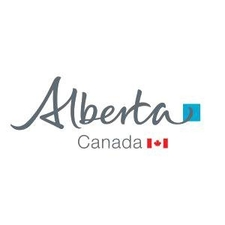FORESTRY
Type of resources
Topics
Keywords
Contact for the resource
Provided by
Years
Formats
Representation types
Update frequencies
status
Service types
-

An administrative unit of forest land designated by the Minister, as authorized under Section 14(1) of the Forests Act.
-
The Saskatchewan Digital Land Cover raster provides a seamless provincial coverage of the province and was created by combining the Saskatchewan Research Council's Northern Digital Land Cover (NDLC) with the Southern Digital Land Cover (SDLC) - See enclosures for complete metadata on these datasets. With exception to the SDLC's value 2 (i.e. Hay Crops) and value 3 (i.e. Native Dominant Grass Lands), the NDLC takes precedence over the SDLC in areas that the two rasters overlap because the NDLC is more current than the dated SDLC. The SDLC's values 2 and 3 were preserved because these land covers are not specifically represented in the NDLC. For the purpose of this dataset, some of the SDLC and NDLC values were reclassified to new values to reconcile varying definitions (i.e. See the Supplementary Information section below for a complete list of image classes with detailed descriptions). A unique colormap was created for this dataset. It should also be noted that because the NDLC's 30 x 30 meter pixels do not align with the SDLC's 30 x 30 meter pixels, this raster was snapped to the NDLC. Last, as is with the SDLC and the NDLC, the extent of this raster does not extend all of the way to the Saskatchewan boundary, specifically, the Information Services Corporation's SaskGIS Provincial Boundary dataset, in numerous areas along the west, south and southeast borders: There are gaps of up to 500m wide of "no data" between the provincial boundary and the raster along these areas of the Saskatchewan boundary.
-

This dataset is produced for the Government of Alberta and is available to the general public. The Forest Management Agreement (FMA) Published Area dataset consists of polygons representing the areas of land where the Province of Alberta grants FMA holders the rights to establish, grow, harvest, and remove timber in accordance with the relevant regulations and policies. Please note that the distribution contact differs for the general public compared to Government of Alberta ministries. Refer to the Distribution Information section of this metadata for the appropriate contact to acquire this dataset.
-

This data collection contains various historical features within Alberta related to the Dominion Forestry Branch (DFB), and the early days of the Alberta Forest Service (AFS). The data collection consists of the following: Historical Forest Reserve Boundaries (1900 to 1930). Timber Berth boundaries (1910 to 1923). Early Ground and Aerial Fire Patrol Routes. Air Stations (1920s). Locations of DFB Forest Surveys (1910 to 1915). AFS Forest and District Boundaries (circa 1938). These datasets provide approximate locations of the features they represent and are intended for use in medium to small-scale mapping. No spatial accuracy tests were conducted on any of the data. Features derived from land locations tied in the Alberta Township System (ATS) are likely to be accurate providing there were no errors in transcribing the locations. However features digitized from old maps will have poor spatial accuracy ranging from several kilometres to a few hundred metres, depending on the map scale, map projection, and the accuracy of the features on the source map.
-

The purpose of this dataset is to identify areas harvested after the date of the inventory. The Forest Stewardship and Trade Branch is responsible for the creation and maintenance of these boundaries for Crown-managed Forest Management Units. This dataset is produced for the Government of Alberta and is available to the general public.
-

The Phase 1 (Broad Scale) Forest Inventory was initiated in 1949 and completed by 1956. The Phase 1 (Broad Scale) Forest Inventory included all publicly owned forested lands in the province except Indian lands, national parks, and an area known as the Rocky Mountains Forest Reserve. The Phase 1 (Broad Scale) Forest Inventory was used to define lands suitable for agriculture, to determine timber harvest levels and plan forest protection and timber and industrial development. Through aerial photo interpretation, land was classified as productive, potentially productive, or non-productive. On productive forest land, homogeneous groups of trees were classified by 'cover types'. Cover types included crown density, height and tree species. Burned, harvested or cultivated land was identified as potentially productive. Non-productive lands included areas with organic soils, barren rock and lakes. No ages or site classes are associated with the polygons. The minimum polygon size was 65 ha. These maps are not available as geo-referenced rectified images or GIS-ready data.
 Arctic SDI catalogue
Arctic SDI catalogue